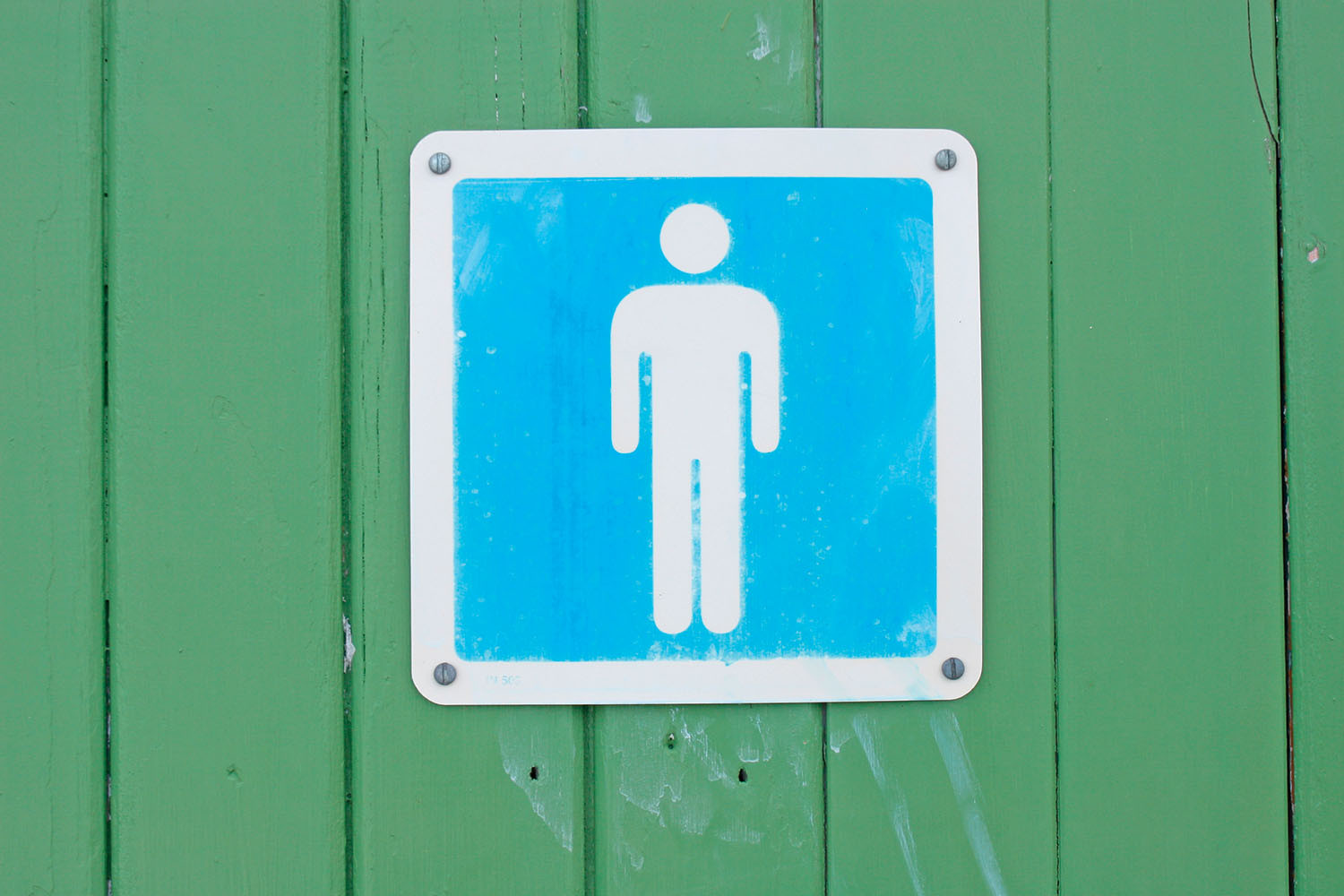Leaking a little urine: It's not just a female problem
Urge, stress, and overflow incontinence can be devastating for men. Treatment can help them get their lives back.
- Reviewed by Anthony L. Komaroff, MD, Editor in Chief, Harvard Health Letter; Editorial Advisory Board Member, Harvard Health Publishing

We all run the risk of leaking urine as we get older. Both sexes can experience leakage with a laugh or cough, or find themselves with a sudden urge to use to the bathroom.
The problem — urinary incontinence — is twice as common in women as it is in men. Yet men seem to have a harder time coping with it. Studies suggest men with incontinence are less likely to seek treatment for it, and are more likely than women to be depressed or avoid social activities because of incontinence.
"Women tend to seek help for incontinence right away. It's too embarrassing for men. They delay going to the doctor's office, and they become depressed because they feel they can't leave the house or interact with others socially," says Dr. Ajay Nehra, director of Men's Health and Male Reconstructive Surgery at Harvard-affiliated Massachusetts General Hospital.
How can men cope better? It starts with understanding the common types of incontinence and how they're treated.
Urge incontinence
Urge incontinence is common in men. It often occurs in men with an overactive bladder — the bladder muscle contracts on its own, creating an overwhelming feeling that you need to urinate, pronto. If you don't make it to the bathroom fast enough, you may leak a little … or a lot.
An overactive bladder can also be caused by enlargement of the prostate — the gland that wraps partly around the urethra (the tube that carries urine from the bladder out of the body).
And sometimes an overactive bladder results from nerve problems that affect the bladder; from side effects of certain medications, such as diuretics; or from side effects of caffeine.
Stress incontinence
Stress incontinence refers to urine leakage from physical force on the bladder — something as simple as laughing, coughing, lifting a heavy object, or exercising. This type of incontinence occurs when muscles (sphincters) that normally squeeze shut and seal off the bladder are damaged or weakened.
Sphincter issues in men usually result from surgery to remove all or part of the prostate. Weakened sphincter muscles can also be caused by spinal cord injuries or medication side effects.
Overflow incontinence
Overflow incontinence describes a bladder that never empties all the way and overflows regularly, with urine leaking out constantly. This type of incontinence in men is usually caused by an enlarged prostate that blocks normal urine flow, or a bladder muscle that can't push out urine on its own.
Other causes include nerve damage from conditions such as diabetes or multiple sclerosis, or use of certain medications that make you unaware of the urge to urinate.
Overflow incontinence comes with an increased risk of developing frequent urinary tract infections, which can lead to confusion, kidney infection, and other health problems.
Diagnosis
Your primary care doctor or a urologist can treat you for urinary incontinence. "We'll ask you to track your voiding, fluid intake, and incontinence episodes for three days," Dr. Nehra says.
Your doctor may also order tests to measure your urine flow or get images of the bladder, or a procedure to look inside the urethra, prostate, and bladder. "That helps us understand how the bladder is filling and emptying," Dr. Nehra says.
Treatment
Treatment depends on the type of incontinence you have. "For an overactive bladder, we'll prescribe medications to tone down bladder activity or increase bladder capacity," Dr. Nehra says. "Scheduling regular bathroom breaks also helps."
So might injections of botulinum toxin (Botox) to relax the bladder muscle, and exercises to strengthen your pelvic floor muscles so you can hold urine in long enough to reach the bathroom.
For stress incontinence, initial treatment includes medications, pelvic floor exercises, and weight loss. If those don't work, surgical procedures can help. "We can place an artificial sphincter muscle around the urethra. We can also implant a sling to support and stabilize the urethra," Dr. Nehra says.
For overflow incontinence, procedures to reduce the size of the prostate and remove obstructions are often the answer.
"The key to treatment is taking that first step of visiting your doctor. We want you to do it before the incontinence hurts your quality of life," Dr. Nehra says.
Image: © CHellyar/Getty Images
About the Author

Heidi Godman, Executive Editor, Harvard Health Letter
About the Reviewer

Anthony L. Komaroff, MD, Editor in Chief, Harvard Health Letter; Editorial Advisory Board Member, Harvard Health Publishing
Disclaimer:
As a service to our readers, Harvard Health Publishing provides access to our library of archived content. Please note the date of last review or update on all articles.
No content on this site, regardless of date, should ever be used as a substitute for direct medical advice from your doctor or other qualified clinician.
















